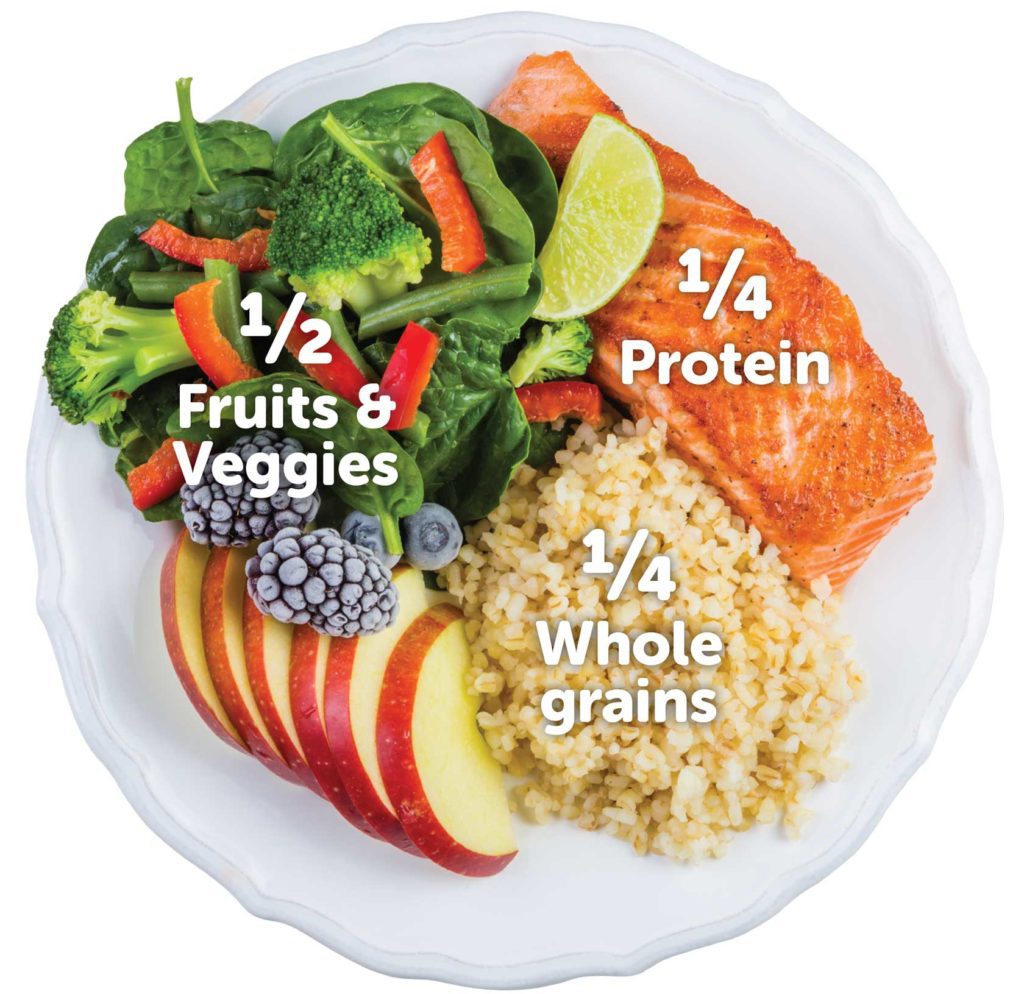
There is not one eating plan for all to follow. The types and amount of food depend on a person’s, age, gender, weight, level of physical activity and taste. Some people, such as those with diabetes, might follow a more regimented plan.
Food does more than satisfy one’s palate. Researchers at Harvard T.H. Chan School of Public Health analyzed four healthy eating patterns that emphasize higher intake of fruits, veggies, whole grains, legumes and nuts, and lower intake of red and processed meats and sugar-sweetened beverages. They discovered that study participants who adhered more diligently to these patterns had a 14% to 21% lower risk of cardiovascular disease compared to those who adhered the least.
In addition, healthy eating was significantly associated with a lower risk of coronary heart disease, which causes most heart attacks, and the lower risk persists across racial and ethnic groups .
Nutrition experts at Harvard University designed what they call a healthy eating plate to demonstrate suggestions for a more nutritious diet. The emphasis is on diet quality rather than calories. Moreover, it allows a personal choice.
To design your personal plate, all it takes is a bit of geometry. Divide your plate in half. Then divide one half again.
Make half your plate fruits and veggies.
Choose a variety of colors. The most vibrantly colored are the richest in vitamins, minerals and fiber. They also contain antioxidants, which are thought to protect against heart disease.
Make one fourth of your plate whole grains
Eat whole rather than refined grains, such as wheat, oats, quinoa and brown rice. Choose whole-grain cereals and breads and whole wheat pasta over white rice and bread.
Make one fourth of your plate protein.
Proteins are the building blocks of life. Examples are fish, poultry, beans, nuts and low-fat yogurt and milk. Limit consumption of red meat and avoid processed meat, such as bacon and hot dogs.
Drink Water
Drink up. Water is essential to our survival. It provides nutrients and oxygen to the body’s cells and organs. It cushions joints and rids the body of waste. Avoid sugary drinks, such as sodas and fruit drinks.
Use Healthy oils
Choose healthy oils like olive, sunflower and peanut. Avoid partially hydrogenated oils (also known as trans fat), as found in margarine, commercial baked goods and coffee creamer. Trans fat raises “bad” cholesterol.







